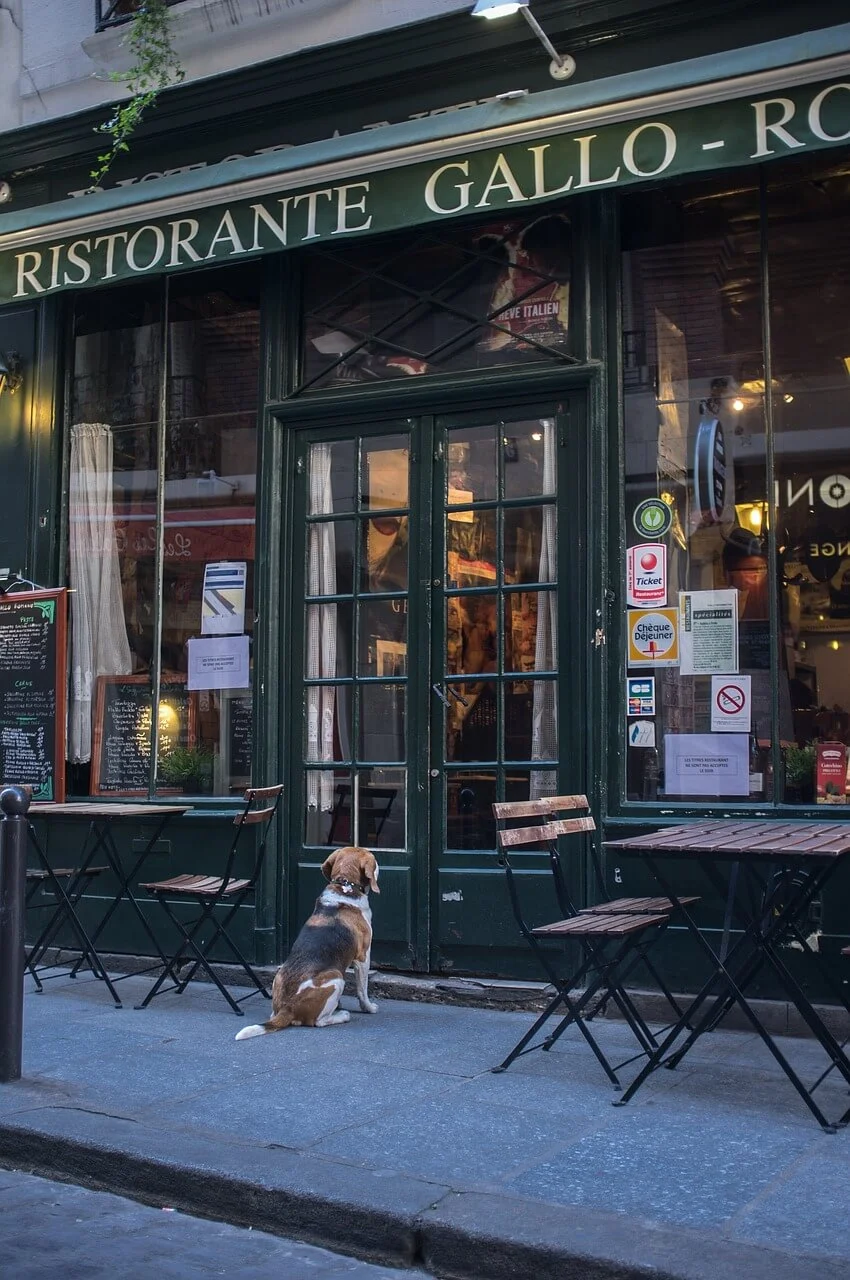Restaurant Project Steps to Success in Building a Unique and Thriving Brand
Opening a restaurant in the United States can be a tremendous opportunity for many individuals. However, several points must be considered before embarking on this venture:
Research and Study: You need to study the restaurant market in the area where you want to open your restaurant. Is there a need for a specific type of restaurant? What are the current food trends?
Financial Planning: Estimate the financial costs of opening and operating the restaurant, including rent, equipment, staff, marketing, and other daily expenses.
Certificates and Licenses: You need to obtain all the necessary certificates and licenses to operate your restaurant, including health permits, building permits, and alcohol licenses (if that is part of your business plan).
Culture and Uniqueness: You need to identify what makes your restaurant unique and appealing in the local restaurant market. Whether it's the food you serve, the customer experience, the decor, or any other element that sets your restaurant apart from others.
Marketing: You need to develop an effective marketing plan to attract customers to your restaurant, whether through traditional advertising, social media, or local promotion.
In general, opening a restaurant in the United States requires careful planning and preparedness to face challenges. However, if the necessary steps are executed carefully, it can be a rewarding and profitable venture.
1- Here is the translated detailed information on research and study for a restaurant project
1. Market Research: Identify the target market for your restaurant, including the geographical and demographic area you want to target. Look for places where demand for restaurants is high and competition is moderate.
2. Competitive Analysis: Study existing restaurants in the target area to understand the successes and challenges they face. What types of restaurants are there? What services do they offer? What are the strengths and weaknesses of each?
3. Gap Identification: Identify the point that can differentiate your restaurant from your competitors. Whether through food quality, service style, place design, menu prices, or any other element.
4. Target Audience Study: Understand the preferences and tastes of potential customers. What are their favorite types of food? What experiences are they looking for when visiting restaurants?
5. Legal and Regulatory Assessment: Check local and state laws and regulations related to opening and operating restaurants. This includes food safety requirements, licenses, environmental regulations, and any laws specific to alcohol sales if it is part of your business plan.
6. Finding the Right Location: Choose a location that suits the type of restaurant you want to open, taking into account factors such as traffic flow, access to target customers, and rental costs.
7. Economic Studies: Economic studies can be conducted to estimate the profitability of the project and its chances of success in the local market.
Taking into account these factors and more, the research and study process can help you identify the important aspects for the success of your restaurant project in the United States.
2- Financial Planning for a Restaurant Project:
1. Startup Costs: Estimate the initial expenses required to open the restaurant, including renting or purchasing a location, renovating or designing the space, purchasing kitchen equipment, furniture, fixtures, obtaining permits and licenses, and covering initial marketing expenses.
2. Operating Expenses: Calculate the ongoing costs of running the restaurant, such as rent or mortgage payments, utilities, staff salaries, food and beverage inventory, supplies, insurance, marketing, advertising, maintenance, and any other recurring expenses.
3. Revenue Projections: Develop realistic revenue projections based on factors such as restaurant seating capacity, average check size, expected daily or weekly customer numbers, seasonal fluctuations, and competition in the area.
4. Cash Flow Management: Create cash flow forecasts to track the flow of funds in and out of the business over time. This helps ensure that the restaurant has sufficient liquidity to cover expenses and operate smoothly.
5. Financing Options: Explore various financing options to cover startup and operating costs, such as personal savings, bank loans, investors, crowdfunding, or government grants and small business programs.
6. Profitability Analysis: Conduct a profitability analysis to determine the restaurant's ability to generate profits over time. This includes comparing expected revenues to estimated expenses to calculate net income and profit margins.
7. Emergency Planning: Anticipate potential challenges or unexpected expenses that may arise during the startup or ongoing operations phase, and create emergency plans to address them. This may include allocating emergency funds or identifying alternative income sources.
8. Financial Management Tools: Use financial management tools such as accounting software, point-of-sale systems, and budget templates to track revenues and expenses, monitor inventory levels, analyze sales data, and make informed financial decisions.
By carefully planning and managing the financial aspects of the restaurant project, you can increase the likelihood of success and sustainability in the competitive restaurant industry.
3- Here is additional translated information about the certificates and licenses required to open a restaurant
1. Public Health Certificate: This certificate is essential to ensure the restaurant's compliance with health and sanitation standards. Restaurants usually need to pass a health inspection and meet local public health requirements before obtaining this certificate.
2. Business License: The local government may require a commercial license to operate your restaurant. The requirements for obtaining this license may vary depending on the location and type of business.
3. Building Permits: If you need to make any modifications to the building to meet your restaurant's needs, you may need to obtain building permits from local authorities.
4. Building Code Compliance Certificate: Local authorities may require a building code compliance certificate to ensure that the site complies with local regulations and laws.
5. Zoning Permits: In some cases, local authorities may require zoning permits to operate the restaurant at the specified location.
6. Transportation and Distribution Licenses: If you plan to offer food delivery or distribute products, you may need special transportation and distribution licenses from local authorities.
These are some common certificates and licenses you may need to open a restaurant in the United States. You should check the requirements for certificates and licenses in the local area where you plan to open your restaurant, as these requirements may vary from city to city and state to state.
4- Here is more information about culture and differentiation in the context of opening a restaurant
1. Cultural Understanding: Understanding the local culture and culinary preferences is crucial for the success of any restaurant. This includes researching the cultural demographics of the area, including predominant ethnicities, food traditions, and dining habits. Adapting your menu and ambiance to fit the local culture can help attract and retain customers.
2. Cuisine Choice: Choosing a cuisine that aligns with local tastes and preferences can set your restaurant apart from others. Whether it's traditional American comfort food, international cuisines, or authentic ethnic dishes, offering something unique and appealing can attract a loyal customer base.
3. Authenticity: Authenticity is highly valued in the restaurant industry. If you're serving ethnic cuisines, ensure that you maintain authenticity in flavors, ingredients, and cooking methods. Customers appreciate genuine culinary experiences that transport them to another culture.
4. Ambiance and Decor: The ambiance and decor of your restaurant play a crucial role in creating an unforgettable dining experience. Whether it's cozy and rustic, sleek and modern, or lively and eclectic, the atmosphere should complement the cuisine and resonate with your target audience.
5. Hospitality and Service: Providing exceptional hospitality and service can differentiate your restaurant from competitors. Warm and attentive service, personal interactions with guests, and going above and beyond to exceed customer expectations can leave a lasting impression and encourage repeat visits.
6. Innovation and Creativity: Innovation and creativity in menu offerings, presentation, and dining experiences can set your restaurant apart. Offering unique ingredients, seasonal specials, special events, or interactive dining concepts can attract attention and generate buzz.
7. Community Engagement: Engaging with the local community can foster a sense of belonging and loyalty among customers. Participating in local events, supporting charitable initiatives, or collaborating with neighboring businesses can integrate your restaurant into the fabric of the community.
8. Consistency and Quality: Consistently delivering high-quality food and service is essential
5- Marketing strategies for your restaurant
- Identifying the target audience: Before starting marketing campaigns, it's crucial to accurately identify the target audience. Are you targeting families, youth, university students, tourists, or another specific demographic?
- Utilizing social media: Utilize social media platforms such as Facebook, Instagram, Twitter, and LinkedIn to interact with the audience, promote offers and promotions, and attract new followers.
- Offering deals and promotions: Use discounts, special meal offers, gift cards, or special events like menu nights to attract new customers and increase loyalty among existing ones.
- Collaborating with local businesses: Develop relationships with local businesses to promote your restaurant and attract more customers.
- Email marketing: Use email marketing to send targeted promotional messages and updates to your customer database.
- Promoting through local social channels: Utilize local social media channels to promote your restaurant.
- Responding to reviews: Ensure professional and timely responses to reviews on online platforms.
- Partnerships and alliances: Leverage partnerships with other establishments in the area to enhance your restaurant's visibility.
By implementing these strategies effectively, you can attract more customers and enhance your restaurant's position in the market.
In conclusion, attention to detail and dedication to providing a unique dining experience should be the primary focus. Additionally, maintaining quality and consistency in service and food is essential to building a loyal customer base and achieving excellence in a competitive industry.





